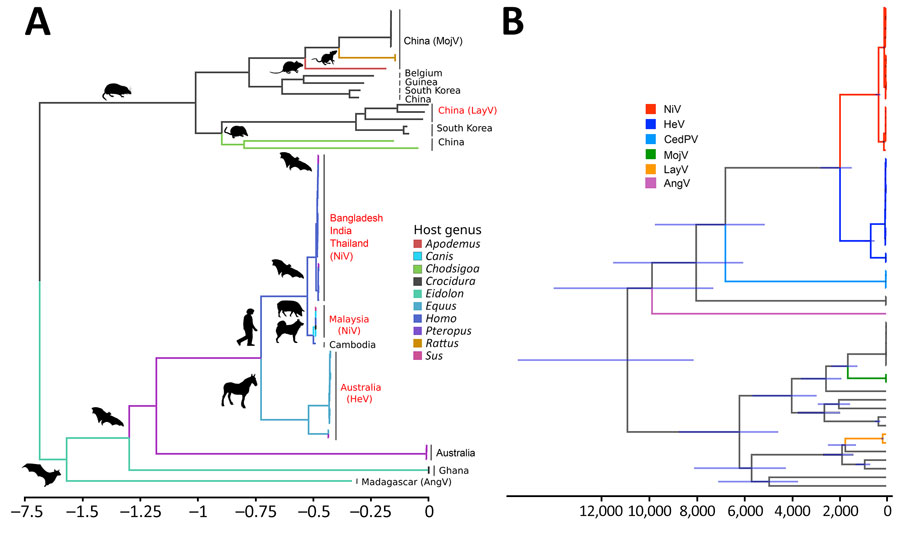Volume 31, Number 3—March 2025
Synopsis
Genetic Diversity and Geographic Spread of Henipaviruses
Figure 6

Figure 6. Time-calibrated phylogenetic trees showing the evolutionary divergence and spread of henipaviruses for sequences submitted to the National Center for Biotechnology Information Virus database (https://www.ncbi.nlm.nih.gov/labs/virus), 1980–2023. A) Ancestral host tree demonstrating divergence of hosts and countries of origin. Scale bar indicates relative number of substitution events per site per unit of time. B) Time-calibrated Bayesian phylogeny showing the divergence times for henipaviruses. The node bars indicate 95% HPD. The divergence between batborne and shrewborne henipaviruses occurred ≈11,000 (95% HPD 15,500–8,200) years ago. AngV, Angavokely virus; CedPV, Cedar virus; HeV, Hendra virus; HPD, highest posterior density; LayV, Langya virus; MojV, Mojiang virus, NiV, Nipah virus.